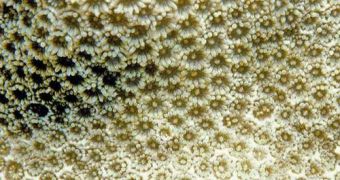The group of most threatened animal species on Earth was extended recently to include the corals, which, according to the International Union for the Conservation of Nature, will lose more than 25 percent of all species within the next couple of decades. Currently, there are 845 registered species of corals, out of which 141 are relatively unknown to researchers while out of the remaining 704 species 32,8 percent are running the risk of extinction.
407 species of coral are currently either catalogued as near-threatened or actually threatened with extinction, says Alex Roger of the Zoological Society of London. "It was a huge surprise because there is only one other group of animals that has been assessed that exceed that level of threat, and that's the amphibians. Outside of the US and Europe, 80% of human sewage is released into the oceans without treatment," he said while pointing out the two most probable causes for the decline of the coral populations: sewage and overfishing.
Sewage often contains fertilizers that encourage the growth of algae, which cover the corals and impede their growth. Additionally, the climate change effects trigger increases in the temperature of sea water, determining the expulsion of small algae the coral depend on to survive. Nearly a decade ago this so-called bleaching effect destroyed up to 16 percent of all coral reefs.
To make matters even worse, some 25 percent of all fish species and another 2 million species of animals and plants are dependent on the coral reefs which offer them shelter and food. This is roughly equivalent to the destruction of half the Amazonian rainforest.
"If this happened in terrestrial ecosystems we would all be shouting from the treetops. And yet, it has now completely passed out of public memory. I have two children that are under one-and-a-half years old. I expect that by the time they are 40, coral reefs will have massively declined and in some regions, such as the Caribbean, they will be pretty much gone. By the end of the century there could be virtually nothing left," Rogers said.
Seeing as how more than 1 billion people around the world feed on species of fish depending on the survival of the corals and that $30 billion worth of goods coming from the coral reefs are produced every year, conserving them would bring mankind considerable benefits.
The 1998 bleaching event did not bring bad news only, but also revealed that some species of coral can resist such effect, suggesting that they may be able to adapt and survive the changes produced by global warming. Acropora cervicornis, a species of staghorn coral listed as endangered for example, was found to be able to resist white band disease which killed off large masses of staghorn corals in the Caribbean, suggesting that the propagation of resistant strains could help some coral reefs.
This however doesn't change the current situation of the Caribbean corals which are close to extinction or those in the Pacific Ocean which are wearing out at unbelievable rates.

 14 DAY TRIAL //
14 DAY TRIAL //